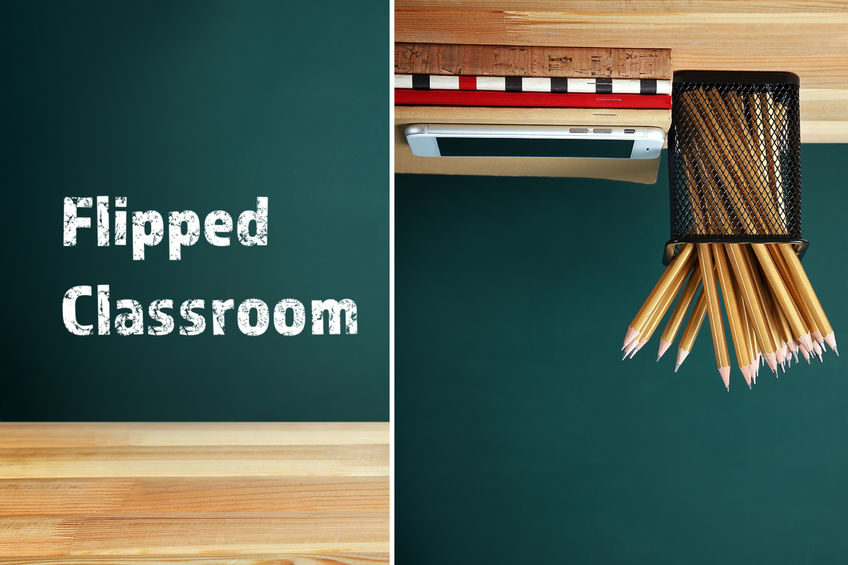In my last blog post, we have discussed the Negative Effects of Technology on Children & How to Prevent That and today we will talk about “Flipped Classroom” which is really an interesting concept for education system in Singapore.
After three continuous lectures, attending the fourth one with half-opened eyes, struggling to fit it in the mind but all the words of teacher end up falling on the ground after hitting the closed door of mind, thereby turning an informative lecture into a worthless lecture.
With advancement in technology and vast access to internet in Singapore, the model of education is changing its shape positively, affecting students, parents and teachers in a good manner.
Lots of efforts are being utilized in bringing changes in education system of Singapore with following motives in mind:
- F– Fun-filled, informative lectures
- L– Leverage technology
- I– Increase student engagement
- P– Provide opportunities for active learning in classroom
- P– Prioritize practical application over theory
The concept of Flipped Classroom is gaining popularity and is being welcomed with open arms across the country. The National University of Singapore and Nanyang Technological University are universities that have embraced the idea of flipped-classroom learning.
Nanyang Technological University (NTU), in 2015 made an announcement to spend $75 million to implement the flipped classroom model for half of its courses.
What is Flipped-Classroom Learning?
‘Aria, a restaurant owner at Singapore, felt uncomfortable and bit weird when her child returned from school and asked to watch a video online before going to the school next day. Aria got worried of her daughter and next day went to school with her to meet her teacher. Her teacher then explained the concept of flipped classroom which satisfied all the queries floating in her mind.’
Just reverse the traditional order of the classroom events of Singapore and you will get a new model named Flipped Classroom. The model is represented by a 30-to-70% ratio of online to face-to-face learning.
Students learn the content by viewing the lecture materials online in form of video lectures and classroom time is spent applying the theoretical content practically, turning a classroom into a homework arena where interactive discussions and collaborative work is performed under the guidance of teacher.
Although Flipped Classroom learning is not a new concept but it is gaining popularity since recent past and it can be evident from the below picture:
Benefits of Flipped Classroom Learning for Singaporean Student
1) More Efficient for Teachers, Hence More Efficient for Students too…
The only drawback of flipped classroom learning is that it requires an initial investment of hard-work from the teachers. The seeds of that hard-work then get watered by output of students, thereby delivering fruitful scores. This is the reason that 96% of teachers who have flipped a lesson would recommend that method to others and 3 in 5 teachers have already flipped their classrooms or are planning to do so.
Teachers are required to put an effort in creating a video and hence setting up a flipped classroom. But this little effort can ultimately save a lot of time in future as there can be an easy transfer of recorded lessons and collected resources to other classes.
Moreover, instead of repeating the lecture for the absent students, teachers in Singapore can go ahead with the next lecture as the missed material is already available online.
2) Control Of Learning Lies Under Ambit Of Students…
All students are different and are gifted with different skill levels and it becomes hard for some students to understand the concept in face-to-face classroom. On the other hand, in the flipped classroom model, where 30% of the student learning take place online, an ideal learning environment is established which allow the students to absorb the information at their own pace.
Students get a chance to go through the passage again or re-watch a video lecture to gain the proper understanding of the content which empowers them to think critically, eventually improving their learning retention and promoting classroom interaction. 9 out of 10 teachers noticed a positive change in student engagement since flipping their classroom.
3) Most Struggling Students Get More Attention
As struggling students, great performers, introverted kids and extroverted students require teacher’s attention differently, the teachers get freedom to decide upon how much time need to be invested with each student.
Since most of the retaining and content absorbing part is to be done in home in this learning model, Singaporean teachers can dedicatedly work on weaker areas of struggling students, providing them individual time.
At Villanova, Weinstein helped lead a pilot program for flipping engineering courses and it was found that the result was more than 10 percent higher than in a traditional classroom (the difference between a D+ and a C) and more than 3 percent higher for the class as a whole (moving from a C+ to a B-).
The popularity of flipped classroom, also known as the inverted classroom is increasing at rapid pace and more and more of educators in Singapore have begin to experiment with this new way of teaching. The concept of flipped classroom can be implemented using various tools and even Google has backed up this concept by gifting all the teachers with software named Google Classroom.
Please do share your thoughts over this new concept in Education System.









